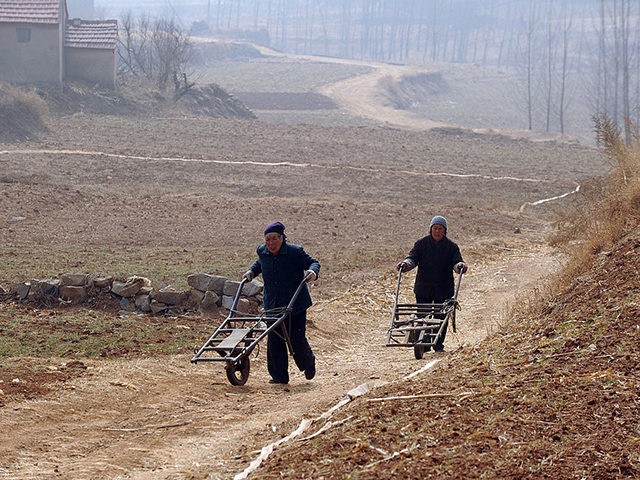China’s central government issued its first national drought alert of 2022 on Thursday, advising authorities to “produce artificial rainfall when necessary” due to the “risk of wildfires” across vast swathes of China’s central and southern regions, according to Xinhua, the country’s official state press agency.
China’s National Meteorological Center (NMC) issued a “yellow” alert for drought “above a moderate level” on August 18. The notice applied to areas across the following ten provinces, municipalities, and regions: Jiangsu, Anhui, Hubei, Zhejiang, Jiangxi, Hunan, Guizhou, Chongqing, Sichuan, and Tibet.
“China has a four-tier, color-coded weather warning system, with red representing the most severe warning, followed by orange, yellow and blue,” according to Xinhua.
China’s “yellow” drought alert was expected to last from August 18 through at least August 21. The scorching heatwave responsible for Thursday’s weather notice began in mid-June, according to data from China’s state-run NMC.
“[T]he comprehensive intensity of the regional heatwaves that have hit China since June 13 is the strongest since 1961 when the country started to keep complete meteorological records,” Xinhua reported on August 17.
The NMC renewed a “high-temperature” alert for much of China’s south on August 19 for the 30th consecutive day, according to a notice posted by the center’s official account on Weibo, a Chinese microblogging website.
“State forecasters also predicted that the current heatwave would only start to abate on Aug. 26.,” Reuters observed on Friday after reviewing the NMC Weibo statement.
According to the news agency:
The weather agency said in its daily bulletin that 4.5 million square kilometres of national territory had now experienced temperatures of 35 degrees Celsius [95 degrees Fahrenheit] or more over the past month — nearly half the country’s total area — with more than 200 weather stations recording record highs.
The time period of China’s ongoing heatwave (June to August) coincides with much of China’s agricultural growing season, meaning the drought threatens to significantly compromise the national food supply.
“[L]ate August [is] a critical period for the growing of autumn grain, accounting for 75 percent of the country’s annual grain output,” NMC chief forecaster Chen Tao told Xinhua on August 17.
“Commercial crops in south China, such as tea trees, citrus fruits and mangoes are fragile to heatwaves,” he noted.
“In central China’s Hubei Province, approximately 397,200 hectares of crops had been affected by water shortages as of Tuesday [August 16],” Xinhua relayed citing Hubei’s agricultural bureau.
“Water supply for urban and rural residents were also affected as some small and medium-sized rivers were too dry to flow. In southwest China’s Chongqing, several villages have reported water shortages,” according to the news agency.
“Chinese farmers start reaping crops such as wheat and planting corn and soybeans from late May, with the harvest starting in the warmer southern parts of the country and gradually moving north,” Bloomberg noted on May 30, adding, “It’s key to fulfilling Beijing’s annual food production targets and shortfalls can lead to sharp price spikes.”
The U.S.-based media outlet made the observation while reporting that China had recently made extraordinary efforts to ensure a successful summer wheat harvest amid global concerns about food shortages and inflation.
Chinese Communist Party Premier Li Keqiang stressed during a May 26 teleconference that “the reaping of crops should proceed without hindrance.”
“Local authorities shouldn’t set up obstacles for any reason and whoever fails to perform their duties will be held accountable,” Li warned.
“The instructions come after farmers in some parts of China had to contend with strict virus curbs that prevented them from plowing their fields and sowing their seeds,” Bloomberg recalled on May 30.
China’s national food supply has regularly suffered from shortages caused by poor or weather-ruined harvests in recent years.

COMMENTS
Please let us know if you're having issues with commenting.